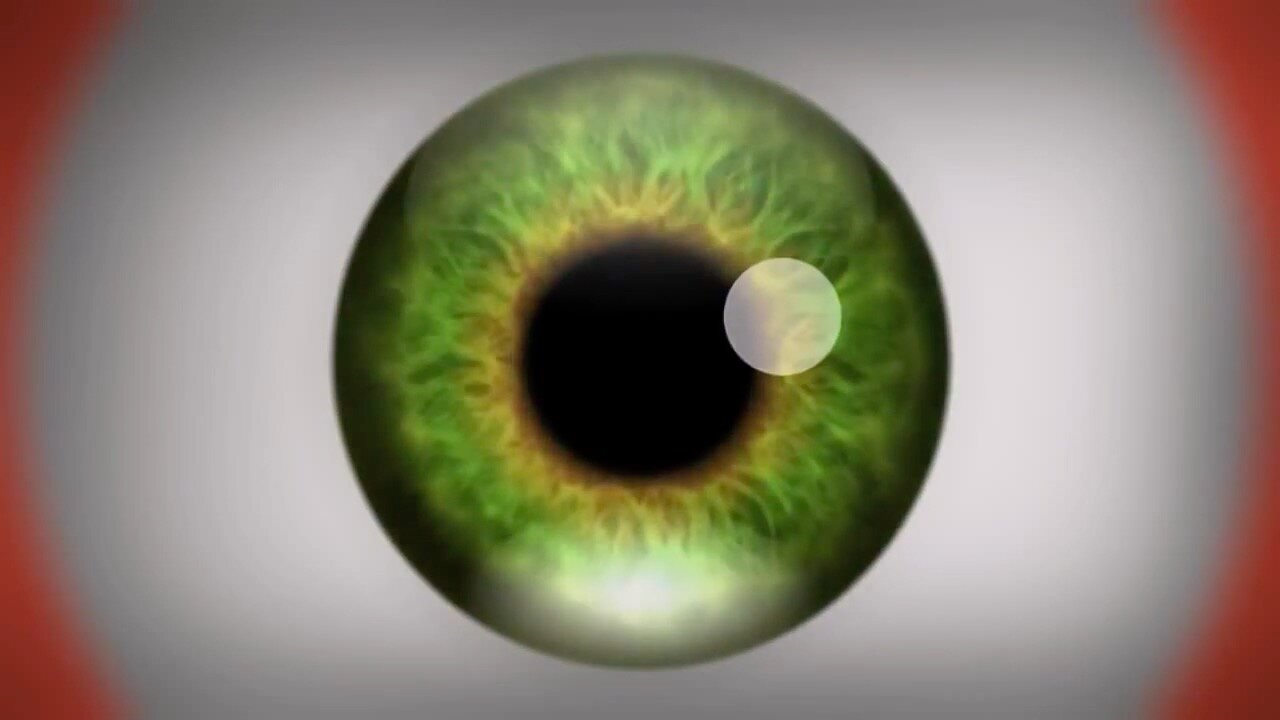Premium Only Content

WOW! ~ Amazing Optical Illusion ~ It's Fun, Try It! Stare For 30-60 Seconds
Visual illusion occurs after about one minute of focused staring at the center of the screen. Reading the letters in the circle for a full minute causes the best effect. Images will appear to be morphing and wavy. More about Motion aftereffect of neurons coding (it works like adaptive compression) below-
The motion aftereffect (MAE) is a visual illusion experienced after viewing a moving visual stimulus for a time (tens of milliseconds to minutes) with stationary eyes, and then fixating a stationary stimulus. The stationary stimulus appears to move in the opposite direction to the original (physically moving) stimulus. The motion aftereffect is believed to be the result of motion adaptation.
For example, if one looks at a waterfall for about a minute and then looks at the stationary rocks at the side of the waterfall, these rocks appear to be moving upwards slightly. The illusory upwards movement is the motion aftereffect. This particular motion aftereffect is also known as the waterfall illusion.
Another example can be seen when one looks at the center of a rotating spiral for several seconds. The spiral can exhibit outward or inward motion. When one then looks at any stationary pattern, it appears to be moving in the opposite direction. This form of the motion aftereffect is known as the spiral aftereffect.
Explanation
Neurons coding a particular movement reduce their responses with time of exposure to a constantly moving stimulus; this is neural adaptation. Neural adaptation also reduces the spontaneous, baseline activity of these same neurons when responding to a stationary stimulus. One theory is that perception of stationary objects, for example rocks beside a waterfall, is coded as the balance among the baseline responses of neurons coding all possible directions of motion. Neural adaptation of neurons stimulated by downward movement reduces their baseline activity, tilting the balance in favor of upward movement.
History
Aristotle (approx. 350 B.C.) reported illusory movement after viewing constant movement, but did not specify its direction. The first clear specification of the motion aftereffect was by Jan Evangelista Purkyně (1820) who observed it after looking at a cavalry parade. Robert Addams (1834) reported the waterfall illusion after observing it at the Falls of Foyers in Scotland. According to Verstraten (1996) the term waterfall illusion was coined by Thompson (1880). According to Wade, Thompson, and Morgan, (2014), the most comprehensive single article on the phenomenon is by Gustav Adolf Wohlgemuth (1911)
Music: Dream Walking (Emerald Mix) by Dhruva Aliman
Amazon- https://amzn.to/2Mgr7pg
https://music.apple.com/us/artist/dhruva-aliman/363563637
https://dhruvaaliman.bandcamp.com/album/the-wolf-and-the-river
http://www.dhruvaaliman.com/
Spotify - https://open.spotify.com/artist/5XiFCr9iBKE6Cupltgnlet
#trippy
#optical
#effect
-
 52:31
52:31
Seeker Land
1 month agoMystery of the 3,000 Year Old Girl from Egtved Denmark - Life in the Bronze Age
219 -
 0:31
0:31
Sokchan999
3 years ago $0.31 earnedWOW it's Amazing Food
1.23K -
 0:10
0:10
Pixabay
3 years agospinning optical illusion
39 -
 1:04:55
1:04:55
Bare Knuckle Fighting Championship
3 days agoBKFC ITALY PRESS CONFERENCE | LIVE!
1.82K -
 10:04
10:04
Space Ice
43 minutes agoThe Movie Silent Hill Is Like Resident Evil Without The Good Parts - Worst Movie Ever
651 -
 5:49
5:49
Hannah Barron
21 hours agoRedneck Euro Mount
4.28K16 -
 32:34
32:34
hickok45
5 hours agoSunday Shoot-a-Round # 268
1.15K6 -
 27:33
27:33
The Finance Hub
15 hours ago $0.20 earnedBREAKING: ALINA HABBA JUST DROPPED A MASSIVE BOMBSHELL!!!
2521 -
 40:23
40:23
PMG
19 hours ago $0.06 earnedHannah Faulkner and Dr. Michael Schwartz | EXPOSING BIG PHARMA
836 -
 18:55
18:55
GBGunsRumble
17 hours agoGBGuns Range Report & Channel Update 15FEB25
155